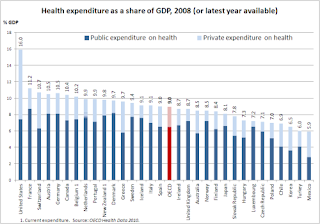This post is an attempt to explain the process of law making in India. It also explains how citizen groups can participate in the process of lawmaking.
Who makes laws?
In India, at the central level, laws are formulated by the Parliament and at the state level by Legislative Assemblies and Councils.
How is a law made?
The process of enacting a new law can be broadly divided into four steps:
Step 1: The need for a new law, or an amendment to an existing piece of legislation, is identified. This may be done either by the government or by citizen groups who can raise public awareness regarding the need for the law.
Step 2: The concerned ministry drafts a text of the proposed law, which is called a ‘Bill’. The Bill is circulated to other relevant ministries for inputs. Comments from the public on the proposed draft may also be invited. For example recently, the UIDAI has invited public feedback on the Draft National Identification Authority Bill. Following this, the draft is revised to incorporate such inputs and is then whetted by the Law Ministry. It is then presented to the Cabinet for approval.
Step 3: After the Cabinet approves the Bill, it is introduced in Parliament. Under the Indian political system, the Parliament is the central legislative (or law making) body. Every Bill goes through three Readings in both Houses before it becomes an Act.
- During the First Reading the Bill is introduced in Parliament. The introduction of a Bill may be opposed and the matter may be put to a vote in the House. In August 2009, the Law Minister withdrew the motion to introduce the Judges (Disclosure of Assets and Liabilities) Bill as many MPs were opposed to the Bill, on grounds that it violated the Constitution.
- After a Bill has been introduced, the Presiding Officer of the concerned House (Speaker in case of the Lok Sabha, Chairman in case of Rajya Sabha) may refer the Bill to the concerned Department Related Standing Committee for examination.
- The Standing Committee considers the broad objectives and the specific clauses of the Bill referred to it and may invite public comments on a Bill. For example, the Standing Committee on Science and Technology, Environment and Forests has invited suggestions on the Civil Liability for Nuclear Damage Bill, 2010.
- Bills which come under the ambit of a number of different ministries, may be referred to a Joint Comittee.
- The Committee then submits its recommendations in the form of a report to Parliament.
- In the Second Reading (Consideration), the Bill is scrutinized thoroughly. Each clause of the Bill is discussed on the floor of the House and may be accepted, amended or rejected.
- During the Third Reading (Passing), the House votes on the redrafted Bill.
- If the Bill is passed in one House, it is then sent to the other House, where it goes through second and third readings.
- During the second reading, the Government, or any MP, may introduce amendments to the Bill, some of which may be based on recommendations of the Standing Committee. However, the Government is not bound to accept the Committee’s recommendations.
Step 4: After both Houses of Parliament pass a Bill, it is presented to the President for assent. She has the right to seek information and clarification about the Bill, and may return it to Parliament for reconsideration. (This may be done only once. If both Houses pass the Bill again, the President has to assent.)
Step 5: After the President gives assent, the Bill is notified as an Act. Subsequently, the Bill is brought into force and rules and regulations to implement the Act are framed by the concerned ministry, and tabled in Parliament.
Do bills get passed even without any discussion in the parliament*?
Parliament passes about 60 Bills every year. It devotes 20-25% of its time on legislative business. The time spent on debating each Bill varies widely.
- In total, the Lok Sabha passed 30 non-financial Bills in 2009.
- In 2009, 8 Bills were passed in less than 5 minutes (27% of the Bills passed by Lok Sabha in 2009). These included, The Legal Metrology Bill, The Commercial Division of High Courts Bill, and the Trade Marks Amendment Bill.
- Only 5 Bills were debated for more than 3 hours.
- In 2008, 16 out of 36 Bills (excluding finance and appropriation bills) were passed by Lok Sabha in less than 20 minutes, most of these without any debate.
- In 2008, Lok sabha worked for 46 days, the lowest ever in a calendar year.
- Things are worse, for Legislative Assemblies. Delhi assembly worked for 20 days in 2007.
Number of Working Days in Legislative Assembly
| Year | 2006 | 2007 |
| Delhi | 23 | 20 |
| Mizoram | 19 | 18 |
| Rajasthan | 30 | 25 |
| Chhattisgarh | 41 | 35 |
| Madhya Pradesh | 43 | 29 |
| Kerala | 51 | 56 |
| Karnataka | 56 | 34 |
* Source: PRS Legislative Research
Sruti Bandyopadhyay is a Research Analyst with the Accountability Initiative.




